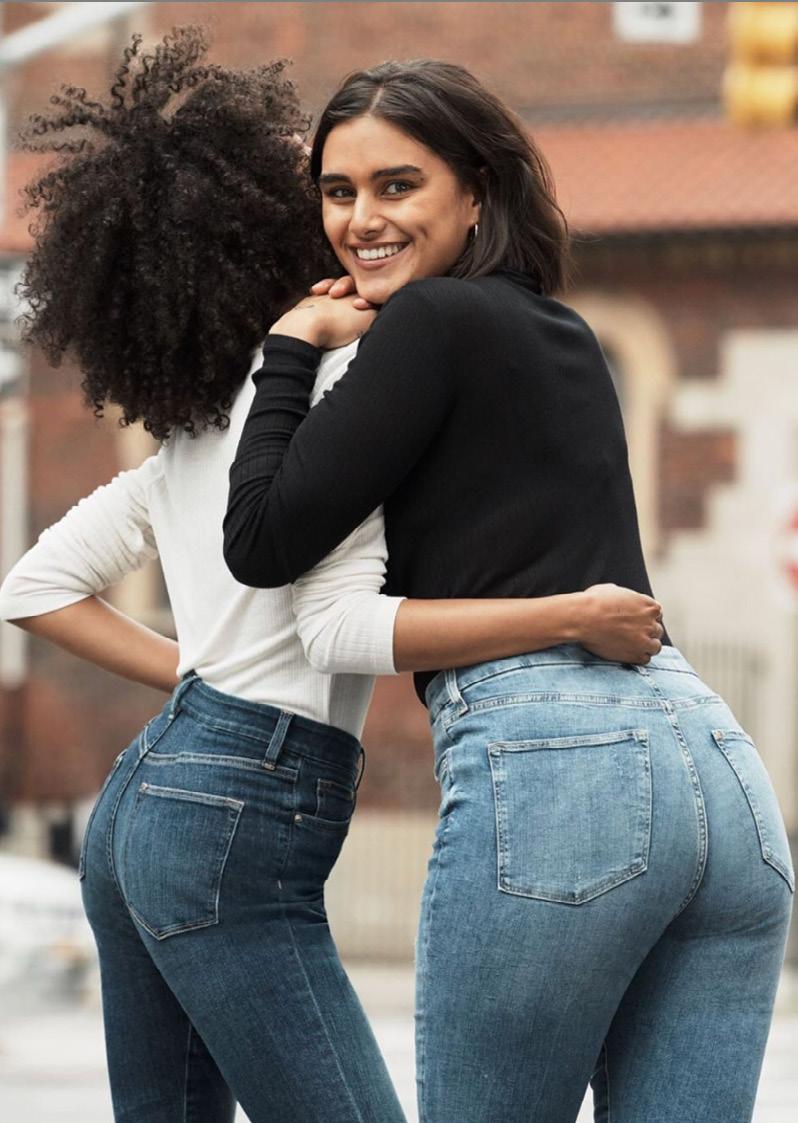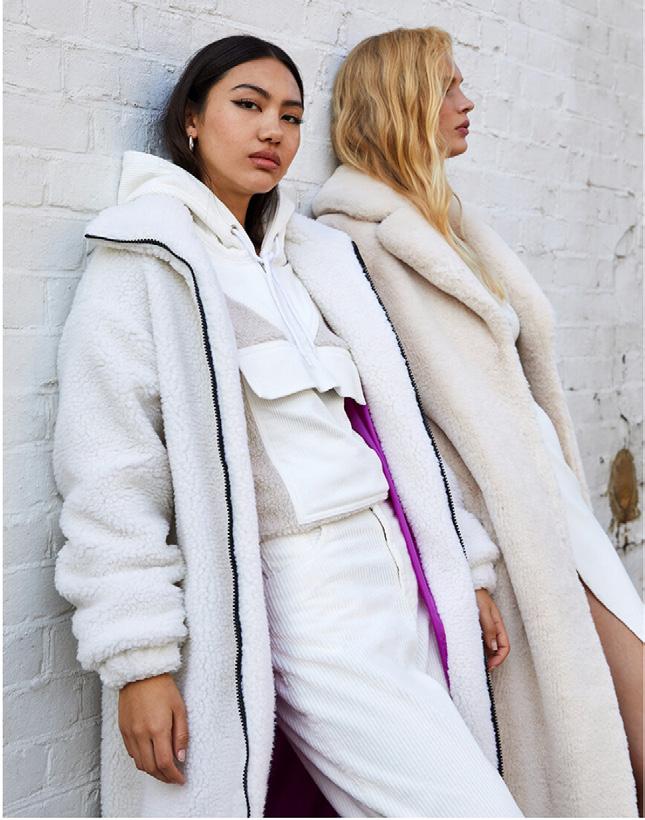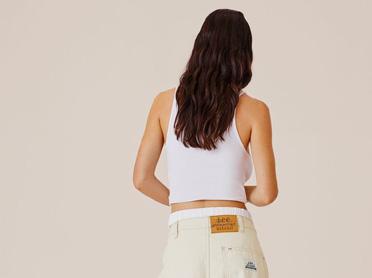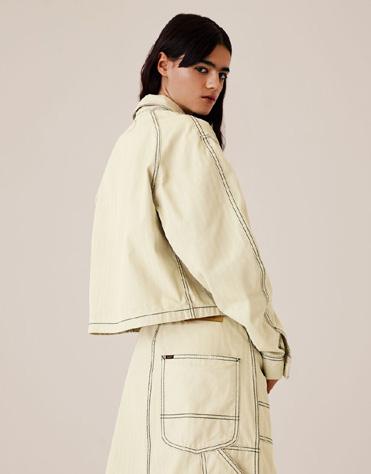
4 minute read
market leaders
market leaders MARKET LEADERS MARKET LEADERS
H&M are the second largest global clothing retailer, specialising in clothing for men, women, teenagers and children. They have over 4,500 stores in 62 countries and an online store available in 33 countries. Their vision is to lead the change towards a circular and renewable fashion industry whilst being a fair and equal company. They’re working towards activating systemic changes across their own operations, their value chain and the wider industry. 95% of cotton and 57% of all materials H&M use is either recycled or sustainably sourced (H&M, 2019).
Advertisement
H&M have leading innovations which provide consumers with drive and encouragement to shop with the brand, whilst shopping sustainably and ethically. They have an old textile collection system, customers can bring in a bag of any old textiles for H&M to recycle or reuse, in return customers receive a £5 voucher. In 2018, H&M collected 20,649 tonnes of textiles for reuse and recycling, which is the equivalent of 103 million t shirts, through this initiative.

The brand is currently working towards sourcing 100% sustainable cotton by 2020, 100% recycled or other sustainably sourced materials by 2030.
The H&M website is full of all of the sustainable movements and actions they’re taking to move forward to make a positive change in the world. H&M make it no secret that they aren’t afraid to try new technologies and sustainable practices to make their brand better and more ethical and more times than not, it pays off, making H&M clear leaders within this sector.
H&M
ASOS are a British online fashion and cosmetic retailer who sell over 850 brands as well as their own clothing and accessories. They are known for their diversity and inclusivity and work with over 200 models and offer more than 30 clothing sizes in their in-house brands. ASOS have a wide target audience mainly within Generations Y and Z who have big awareness on climate and environmental issues. The brand makes it easy for their consumers to find the most sustainable products, by providing material information on each product. In 2018, ASOS recycled 3042 tonnes of plastic from EU customer returns.
In 2017, alongside 35 other brands. ASOS signed up to the 2025 Sustainable Sourcing Challenge, pledging to source 100% more sustainable cotton by 2025. In 2017, ASOS managed to obtain 4323 metric tonnes of cotton, of which 71% was more sustainable. In the same year, ASOS also developed an Ethical Trade Strategy which prioritises transparency, improving wages, health and safety, addressing and reducing modern slavery risks and identifying and stopping child labour. With ASOS being so open to their consumers about these common issues within the fashion industry and working to avoid them happening, is giving their consumers an education on these topics whilst building brand and consumer trust which will boost consumer’s brand loyalty and drive them to shop with the brand. Transparency is a big factor to consumers and according to a survey, 81% of consumers said brands must be transparent on social media (eMarketer, 2018).

ASOS also have sub brand ‘ASOS Marketplace’ which provides a platform for small businesses selling their own label, vintage collections or multi brands. ASOS Marketplace helps give vintage fashion a new lease of life. 70% of clothes sold on ASOS Marketplace are vintage or pre-worn items, contributing to ASOS’ 2020 Circular Fashion commitments.
ASOS

image: asos.com
WEEKDAY
Weekday was founded in 2002 by the H&M group, they’re a fashion and denim brand inspired by youth culture and street style. Weekday stock both in house brands along with external brands. Like all H&M Group brands, Weekday have inspiring and innovating ethics which they promote and share for all their consumers and market to see. 68% of Weekday products are currently made from sustainably sourced materials and 90% of all their cotton products are made with organic or recycled cotton, including their jeans, which since 2015 have been made from organic cotton (Weekday, 2019). Weekday also back up their source choices with facts and statistics on their website, starting by explaining why organic cotton is better than conventional cotton. Weekday say organic cotton is grown without chemical pesticides and fertilizers – and no genetically modified organisms, protecting farmers and the environment. Organic cotton requires 62% less energy to be produced and overall, 46% less climate impact compared to conventional cotton (Textile Exchange Report, 2016).
Weekday go further than just using recyclable and sustainable materials, their sustainable ethics branch out further afield to not just the production of their garments but how they’re distributed and promoted. Most of Weekday’s campaigns are shot in their in-house studio or local locations, which cuts down unnecessary travel, they also choose freight methods that lead to the least carbon dioxide emissions, for example they ship their products via boats rather than flying. Weekday also limit their water usage by constantly increasing their share of recycled materials, which require less water than virgin materials, they also collaborate with WWF to conserve fresh water resources.
To continue improving, Weekday have set themselves a few goals. By 2020, they want to be using only organic or recycled cotton, by 2025 to be using only reusable, recyclable or compostable plastic in their packaging and by 2030, to be using 100% recycled or sustainably sourced materials.










